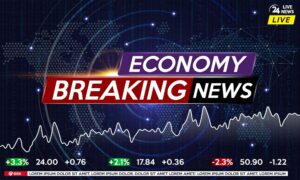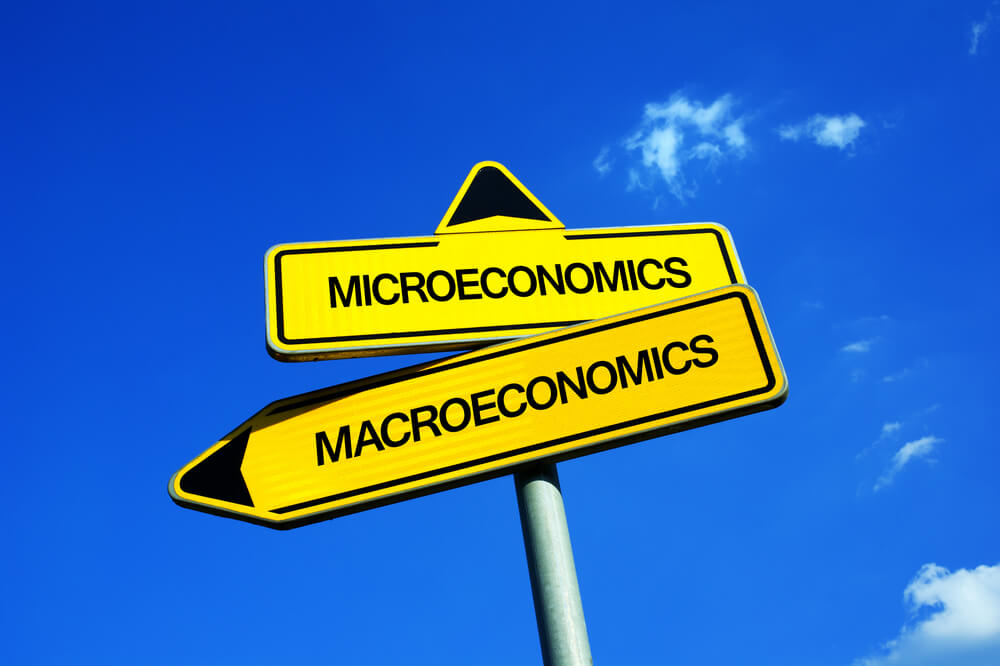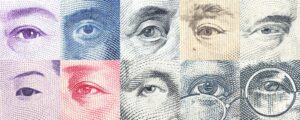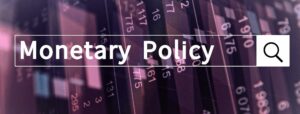
As a trader, it is extremely important to keep up with the latest economic news and events, as they can have drastic impacts on the
Please be advised that our Client Portal is scheduled for essential maintenance this weekend from market close on Friday 5th April, 2024, and should be back up and running before markets open on Sunday 7th April, 2024.
CFDs are complex instruments and come with a high risk of losing money rapidly due to leverage. 62% of retail investor accounts lose money when trading CFDs with this provider.
You should consider whether you understand how CFDs work and whether you can afford to take the high risk of losing your money.
Let us show you how macroeconomic indicators form a key element of fundamental analysis for traders by providing insight into the state of a country’s economy. We’ll explain the most important indicators by country.
Written by Aaron Akwu, Head of Education Hantec Markets
Macroeconomics is a branch of economics that focuses on the study and analysis of large-scale economic phenomena and aggregates. It encompasses the examination of economic growth, economic analysis, and economic theory, among other aspects. Macroeconomists analyze the overall performance and behavior of an economy, aiming to understand how various factors interact and influence its functioning.
One of the central objectives of macroeconomics is to study and explain economic growth. This pertains to the sustained increase in the production and consumption of goods and services within an economy over time. Macroeconomists investigate the determinants of economic growth, such as technological advancements, capital accumulation, and labor productivity. By understanding these factors, policymakers and economists can devise strategies to foster and sustain economic growth in the long run.
Moreover, economic analysis plays a crucial role in macroeconomics. It involves the examination and interpretation of economic data and indicators to gain insights into the overall health and performance of an economy. Macroeconomists employ various quantitative and statistical techniques to analyze economic variables like gross domestic product (GDP), inflation rates, unemployment levels, and trade balances. These analyses provide policymakers with valuable information to make informed decisions regarding monetary and fiscal policies.
In addition to economic analysis, macroeconomics heavily relies on economic theory. Economic theories form the foundation for understanding the behaviour of individuals, firms, and governments in the context of the entire economy. These theories provide frameworks for explaining phenomena such as aggregate demand and supply, business cycles, inflation, and unemployment. By utilizing economic theory, macroeconomists can develop models that simulate the behavior of the economy under different circumstances, enabling predictions and policy evaluations.

The history of macroeconomics revolves around the study of large-scale economic phenomena and the development of theories and models to understand and analyze them. It encompasses a wide range of topics, including the role of central banks, fiscal and monetary policies, and the interactions between various economic agents.
Macroeconomics as a distinct field of study emerged in the early 20th century, influenced by the Great Depression of the 1930s and the subsequent need to comprehend and address large-scale economic crises. One of the key milestones in the history of macroeconomics was the publication of John Maynard Keynes’ book, “The General Theory of Employment, Interest, and Money,” in 1936. Keynes’ work challenged classical economic theories and emphasized the role of aggregate demand in shaping economic outcomes.
Following Keynes’ groundbreaking contributions, macroeconomics underwent significant developments in the post-war period. One important aspect was the construction of macroeconomic models that sought to capture the complexities of real-world economies. These models incorporated variables such as aggregate consumption, investment, government spending, and the money supply to analyze how changes in these factors affect overall economic performance.
Central banks have played a crucial role in macroeconomic theory and practice. These institutions are responsible for formulating and implementing monetary policy, which involves managing the money supply, interest rates, and other monetary instruments to achieve certain economic objectives. Central banks often use their policy tools to influence inflation, employment levels, and overall economic stability.
In addition to monetary policy, fiscal policy also has a significant impact on macroeconomic outcomes. Fiscal policy refers to the use of government spending, taxation, and borrowing to influence the overall level of economic activity. Governments employ fiscal policy measures to stimulate or dampen aggregate demand, promote economic growth, and stabilize the economy during periods of recession or inflation.
Over the years, macroeconomics has witnessed the development of various schools of thought and theoretical frameworks. These include monetarism, supply-side economics, and new classical economics, among others. Each school of thought brings its unique perspective on the functioning of economies and provides insights into the effectiveness of different policy approaches.
In recent decades, macroeconomics has increasingly embraced empirical analysis and econometric techniques to test and refine theoretical models. The availability of large-scale data sets and advancements in computational power have facilitated the use of sophisticated statistical methods to study macroeconomic phenomena.

Macroeconomics and microeconomics are two distinct branches of economics that focus on different aspects of the economy. While they both deal with economic principles and concepts, they have separate scopes and objectives.
Macroeconomics examines the economy as a whole, taking into account broad factors such as national income, aggregate output, employment levels, inflation, and economic growth. It analyzes the overall performance and behavior of the entire economy, including factors that influence it on a large scale. Macroeconomists study trends, patterns, and relationships between various economic variables, aiming to understand and predict the behavior of the overall economy.
One crucial institution that plays a significant role in macroeconomic analysis is the Central Bank, such as the Federal Reserve in the United States. The Federal Reserve is responsible for conducting monetary policy, which involves managing the money supply, interest rates, and the stability of the financial system. Through its actions, the Federal Reserve aims to achieve price stability, maximize employment, and promote sustainable economic growth.
Monetary policy, a key tool of macroeconomic management, involves adjusting interest rates and controlling the money supply to influence economic activity. The Federal Reserve uses monetary policy to stimulate or slow down the economy based on its assessment of the prevailing economic conditions.
On the other hand, microeconomics focuses on individual economic units, such as households, firms, and markets. It examines the behavior of these entities and how their decisions shape resource allocation, production, and consumption. Microeconomics provides insights into the principles that govern individual choices, market interactions, and the determination of prices.
Microeconomic foundations form the basis for understanding the behavior of individual agents within the economy. These foundations encompass concepts such as supply and demand, market equilibrium, consumer preferences, production theory, and cost analysis. By studying these foundations, economists can analyze the behavior of individuals and firms and how their interactions shape market outcomes.
In addition to the Federal Reserve’s role in macroeconomic management, fiscal policy also plays a significant role. Governments implement fiscal policy to stabilize the economy, address income inequality, and promote economic development. By adjusting tax rates, government spending, and public investments, policymakers can impact aggregate demand and stimulate economic activity.

It is important to note that these limitations do not imply that macroeconomics is without value. Despite its challenges, macroeconomic analysis provides crucial insights into the functioning of the economy and helps policymakers make informed decisions. However, recognizing and addressing these limitations can contribute to the refinement and improvement of macroeconomic models and theories.

In the realm of economics, macroeconomic indicators play a pivotal role in assessing the overall health and performance of an economy. By measuring various key factors, these indicators provide valuable insights into the fiscal and monetary policy, enabling economists to make informed assessments and predictions. Let’s delve into some crucial macroeconomic indicators, highlighting their significance and the implications they hold for economies worldwide:
These macroeconomic indicators, when analyzed collectively, provide economists with a comprehensive understanding of an economy’s performance and potential challenges. While different economic schools of thought, such as new Keynesian models, may interpret these indicators through different lenses, they remain crucial tools for policymakers, businesses, and individuals alike. By monitoring these indicators, policymakers can shape fiscal and monetary policy effectively, striving to achieve stable economic growth, low unemployment rates, and a robust business environment.
Here are some keyways to influence macroeconomics:
The Keynesian economy, named after the influential economist John Maynard Keynes, is an economic theory that emphasizes the role of government intervention in managing the business cycle and stabilizing the economy. Keynesian economics became popular during the Great Depression and has had a significant impact on economic policy since then.
One of the key principles of the Keynesian economy is the idea that aggregate demand plays a crucial role in determining the level of economic activity. According to Keynes, fluctuations in aggregate demand can lead to periods of economic boom or bust. In times of recession or high unemployment, Keynesian economics suggests that the government should use fiscal policy, such as increased government spending or tax cuts, to stimulate aggregate demand and boost economic activity.
Another important aspect of the Keynesian economy is the concept of the multiplier effect. Keynes argued that an increase in government spending would have a larger impact on aggregate demand than the initial increase itself. This is because when the government spends money, it creates income for individuals and businesses, who then spend a portion of that income, creating further income for others. This multiplier effect can help to stimulate economic growth.
In addition to fiscal policy, Keynesian economics also emphasizes the role of monetary policy in managing the economy. Keynes advocated for central banks to use interest rate adjustments and other monetary tools to influence the level of investment and consumption in the economy.
Critics of Keynesian economics argue that excessive government intervention can lead to inefficiencies and distortions in the market. They contend that the focus on short-term demand management may neglect long-term economic fundamentals and create unsustainable economic imbalances.
Overall, the Keynesian economy is a theory that advocates for active government involvement in managing the economy to achieve full employment and stabilize economic fluctuations. It has been influential in shaping economic policies in many countries and continues to be a subject of debate among economists.

As a trader, it is extremely important to keep up with the latest economic news and events, as they can have drastic impacts on the

Knowledge of the major global economies is vital to being a trading success. This article will look at the world’s 10 largest economies by GDP.

The Forex markets are affected by many different factors, with currency pairs impacted by: the individual strength of the two economies in the currency pair
Risk Warning
CFDs are complex instruments and come with a high risk of losing money rapidly due to leverage. 62% of retail investor accounts lose money when trading CFDs with this provider. You should consider whether you understand how CFDs work and whether you can afford to take the high risk of losing your money.
Please click here to view our Risk Disclosure.
Hantec Markets use cookies to enhance your experience on our website. By staying on our website you agree to our use of cookies.
You can access our Cookie Policy here
Risk Warning
CFDs are complex instruments and come with a high risk of losing money rapidly due to leverage.
You should consider whether you understand how CFDs work and whether you can afford to take the high risk of losing your money.
Please click here to view our Risk Disclosure.
Hantec Markets use cookies to enhance your experience on our website. By staying on our website you agree to our use of cookies. You can access our Cookie Policy here
Hantec Markets is a trading name of Hantec Group.
This website is owned and operated by Hantec Markets Holdings Limited. Hantec Markets Holdings Limited is the holding company of Hantec Markets Limited and Hantec Markets Ltd.
Hantec Markets Limited is authorised and regulated by the Financial Conduct Authority (FCA) in the UK (Register no: FRN 502635).
Hantec Markets Ltd. is authorised and regulated as an Investment Dealer by The Financial Services Commission of Mauritius (License no: C114013940).
The services of Hantec Markets and information on this website are not aimed at residents of certain jurisdictions, and are not intended for distribution to, or use by, any person or entity in any jurisdiction or country where such distribution or use may be contrary to any of the laws or regulations of that jurisdiction. The products and services described herein may not be available in all countries and jurisdictions. Those who access this site do so on their own initiative, and are therefore responsible for compliance with applicable local laws and regulations. The release does not constitute any invitation or recruitment of business.
Hantec Markets does not offer its services to residents of certain jurisdictions including USA, Iran, Myanmar and North Korea.


We are transferring you to our affiliated company Hantec Trader.
Please note: Hantec Trader does not accept customers from the USA or other restricted countries.
